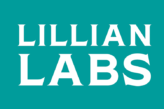Uncovering your customers’ unmet needs is a key activity in the “Exploration” phase of the Pragmatic Marketing Framework, where we ask two questions: What challenges, frustrations, and unmet needs do consumers have? How are current competitive offerings addressing these?
It’s critical because if potential unmet needs aren’t identified in this stage, the probability that they will not be unveiled during other phases is high. Simply said, undiscovered unmet needs result in missed opportunities, which are often opportunities that your competitors will take advantage of.
Your first step is to identify the unmet needs. You should use multiple sources here including primary and secondary market research. Primary research activities are planned to address a specific objective and include focus groups, in-depth interviews, and in-context ethnographic observations with consumers, decision-makers/influencers and other people that have category knowledge or involvement. For example, in beauty care, you may want to speak with your target customers and with retail salespeople in cosmetics. Secondary research focuses on mining existing data, such as consumer complaints, online reviews, social media discussions, and other data you have access to. Also investigate your competitors’ actions and how consumers use non-category substitutes to achieve their goals – dig deeper to tie them back to a consumer’s need. By tapping into multiple sources, you enhance the likelihood of identifying unmet needs with the best pay-off.
Next, you need to add appropriate context to each unmet need to make sure you really understand the root problem and its nuances, such as which customer segments experience these needs, and the desired outcome your target is striving to achieve. Utilizing a framework such as the Jobs-to-be-Done process (Anthony W. Ulwick’s book “Jobs to be Done: Theory to Practice”) can be helpful in driving consistency and thoroughness here.
Then, you can brainstorm potential solutions. Don’t limit yourself to one solution per need. Often, an unmet need can generate several potential solutions, and sometimes a solution can address multiple needs. Be creative and make sure you include a diverse team throughout the process to represent different personalities, functional expertise, and experiences. These solutions should be communicated as benefits for the customers and as engineering requirements for the organization.
Finally, it’s time to quantify the potential of these possible solutions, which considers the appeal to the customer against the cost to deliver the product, which ultimately informs the feasibility and opportunity for the new product. You are now equipped to continue the ideation and refinement stages of the Pragmatic Marketing Framework to generate the greatest ROI proposition. We’ve helped many clients answer the key questions at each step of the framework, so if you have questions or would like to discuss how we can help, please reach out.


